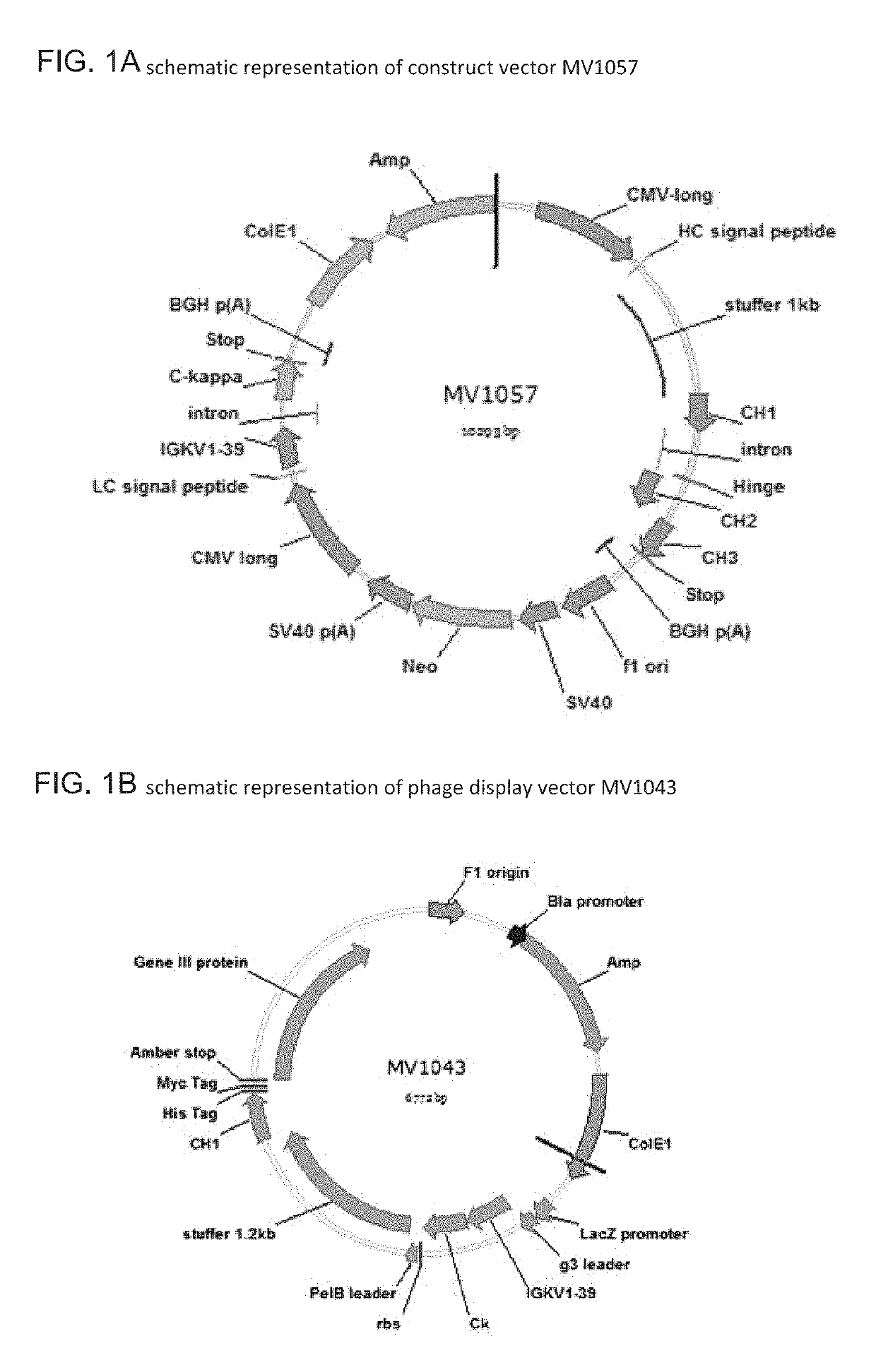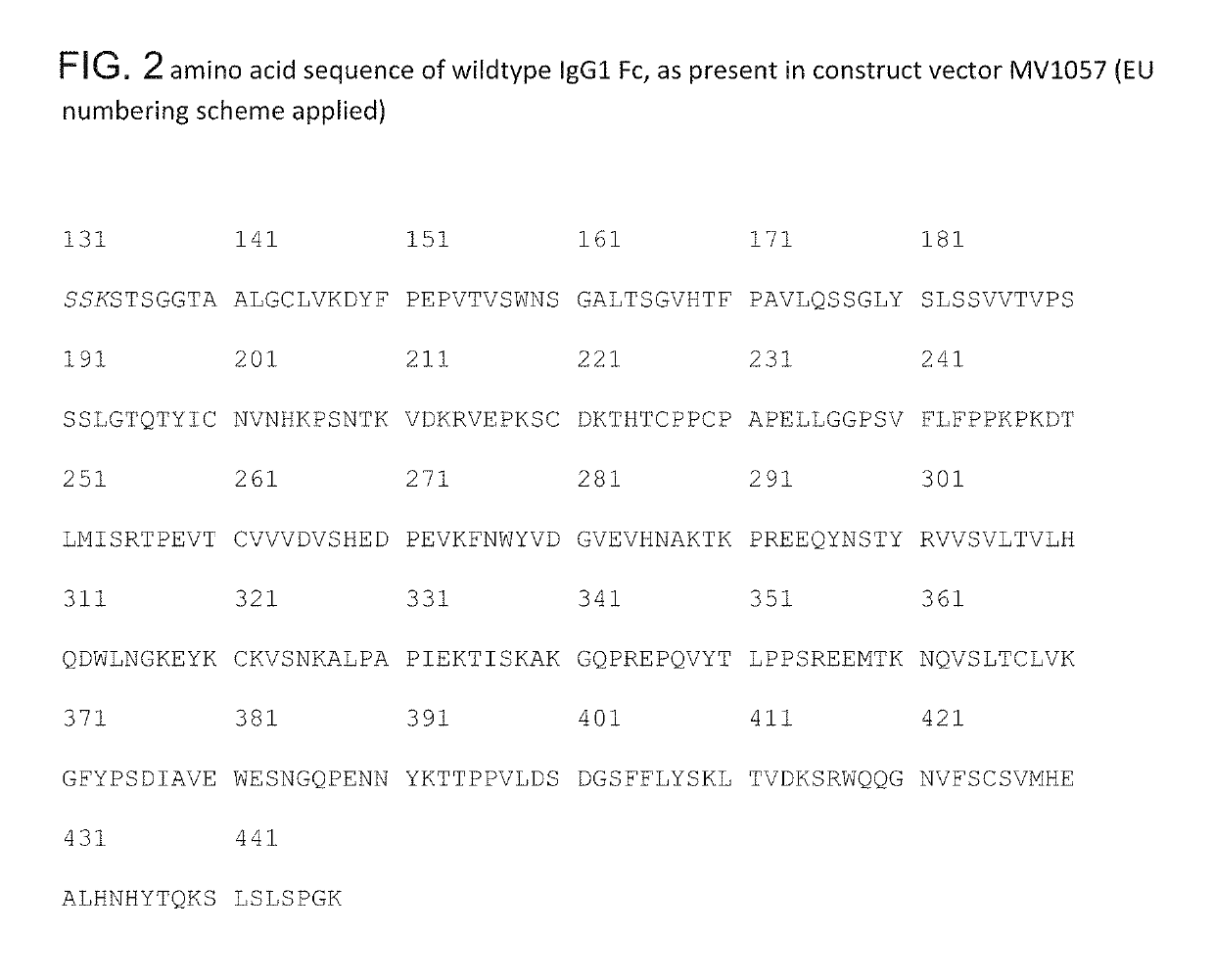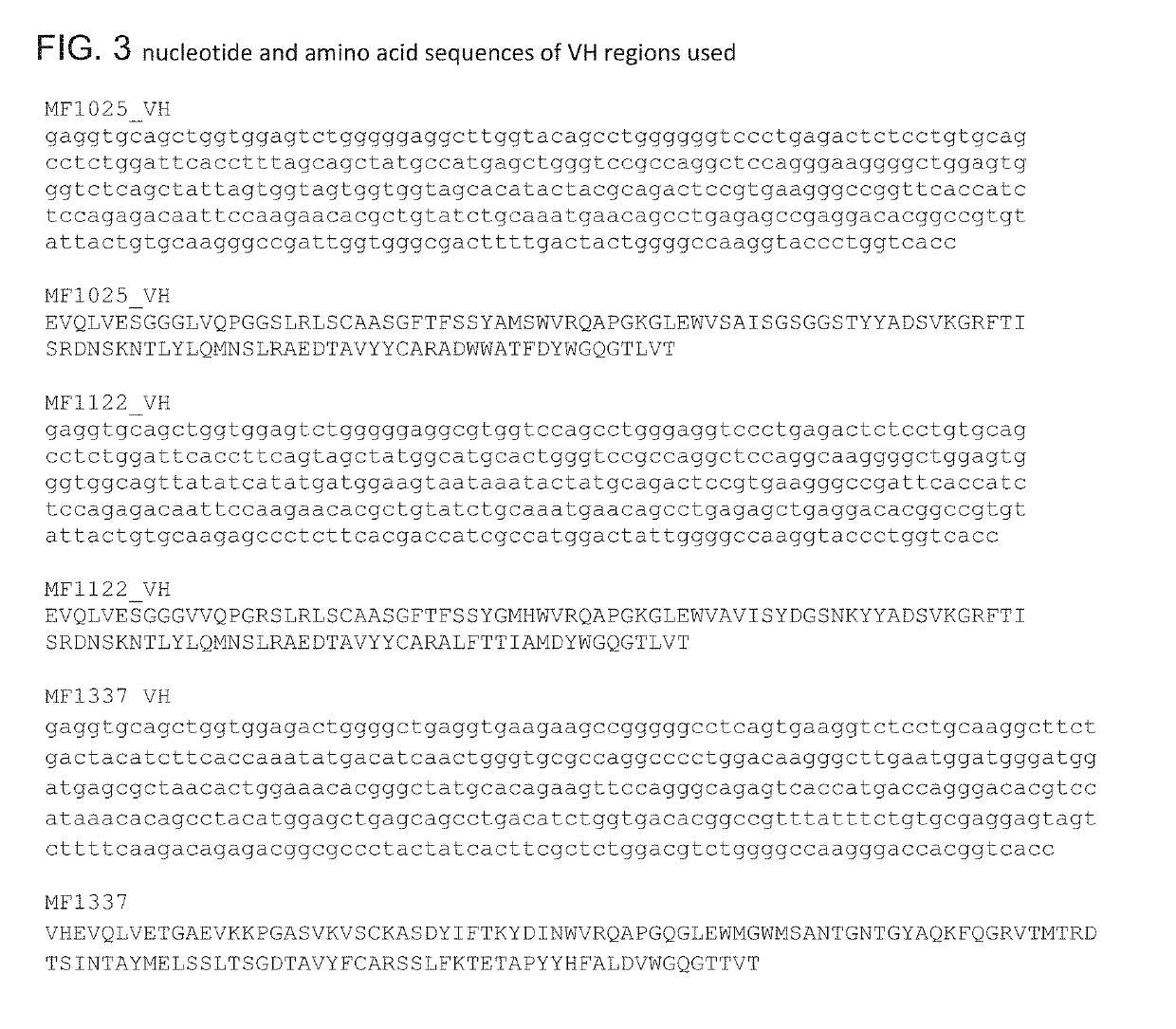Methods and means for the production of Ig-like molecules
a technology of ig-like molecules and production methods, applied in the field of molecular biology, medicine and biological therapeutics, can solve the problems of complex diseases, insufficient treatment of disease by single epitope on a single cellular or soluble protein or pathogen, and large variation
- Summary
- Abstract
- Description
- Claims
- Application Information
AI Technical Summary
Benefits of technology
Problems solved by technology
Method used
Image
Examples
example 1
d Substitutions to Create Various Different CH3-Domains
[0156]In order to have a wide variety of Ig-like molecules that differ in their CH3 domains such that pairing of CH3-domain comprising Ig-like molecules is preferentially promoted or inhibited, a number of amino acid substitutions that were known to promote heterodimer formation, as well as a number of alternative amino acid substitutions that were not previously reported nor tested but that were chosen to promote homodimer formation, were introduced into a construct vector (construct vector MV1057; FIG. 1A). The construct vector MV1057 comprises nucleic acid sequences encoding the normal wildtype IgG1 Fc part, as depicted in FIG. 2. Table 1 lists the amino acid substitutions that were introduced in this wildtype Fc, resulting in a series of seven constructs. All constructs were made at Geneart. Constructs 1, 2 and 3, or alternatives thereof, have previously been described to drive heterodimerization (EP01870459, WO2009 / 089004) ...
example 2
f VH into Constructs with CH3 Mutations
[0158]Several antibody VH regions with known specificities and known ability to pair with the human IGKV1-39 light chain were used for cloning into these constructs. As indicated earlier, all CH3 variants can be used in association with other antibody domains to generate full length antibodies that are either bispecific or monospecific. The specificity of the antibody as defined by the VH / VL combinations will not affect the heavy chain dimerization behaviour that is driven by the CH3 domains. Model VH / VL combinations were used throughout the studies, wherein all VLs are based on the germline human IGKV1-39 and VHs vary. FIG. 3 provides full sequences and specificities of the antibody VH regions used throughout the studies. The MF coding refers to internal Merus designation for various VHs, e.g. VH MF1337 has specificity for tetanus toxoid, MF1025 for porcine thyroglobulin, MF1122 for bovine fibrinogen. VH regions present in phage display vector...
example 3
ion and Expression of Full IgG in HEK293T Cells
[0159]Transfection of the various plasmids encoding the recloned VH variants, and further encoding the common light chain huIGKV1-39, in HEK293T cells was performed according to standard procedures such that IgG could express (de Kruif et al Biotech Bioeng. 2010). After transfection, IgG expression levels in supernatants were measured using the ForteBIO Octet-QK system, which is based on Bio-Layer Interferometry (BLI) and which enables real-time quantitation and kinetic characterization of biomolecular interactions; for details see www.fortebio.com. When expression levels exceeding 5 μg / ml were measured, the IgG was purified using Protein A affinity purification.
PUM
| Property | Measurement | Unit |
|---|---|---|
| pH | aaaaa | aaaaa |
| pH | aaaaa | aaaaa |
| total volume | aaaaa | aaaaa |
Abstract
Description
Claims
Application Information
 Login to View More
Login to View More - R&D
- Intellectual Property
- Life Sciences
- Materials
- Tech Scout
- Unparalleled Data Quality
- Higher Quality Content
- 60% Fewer Hallucinations
Browse by: Latest US Patents, China's latest patents, Technical Efficacy Thesaurus, Application Domain, Technology Topic, Popular Technical Reports.
© 2025 PatSnap. All rights reserved.Legal|Privacy policy|Modern Slavery Act Transparency Statement|Sitemap|About US| Contact US: help@patsnap.com



